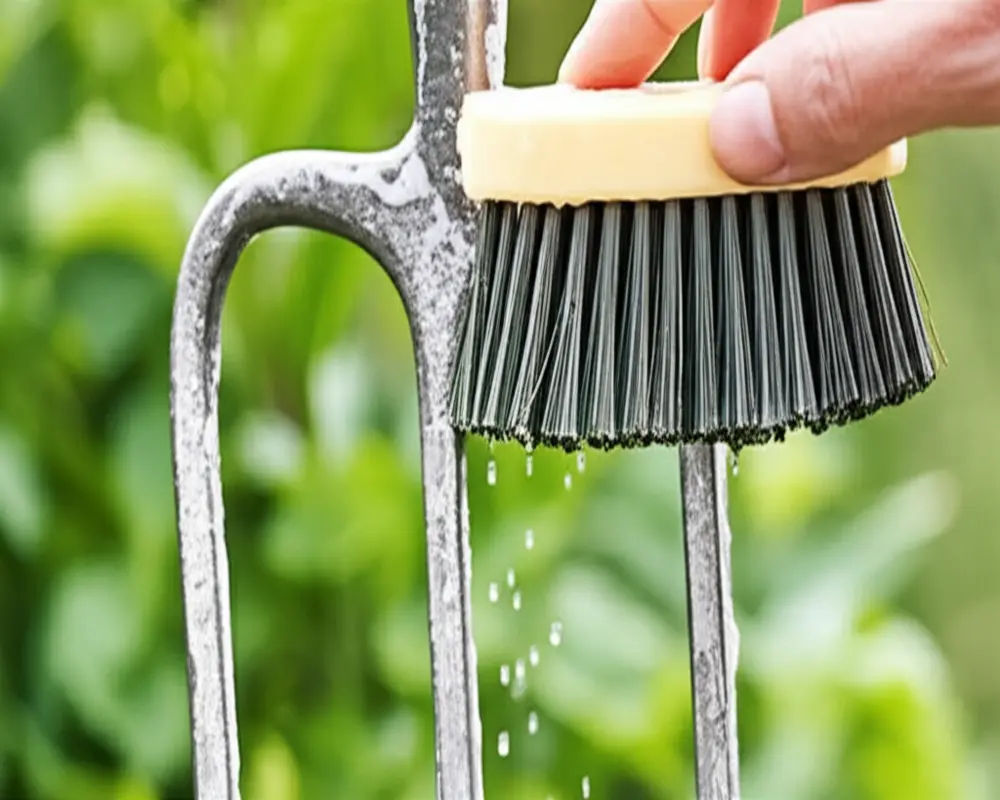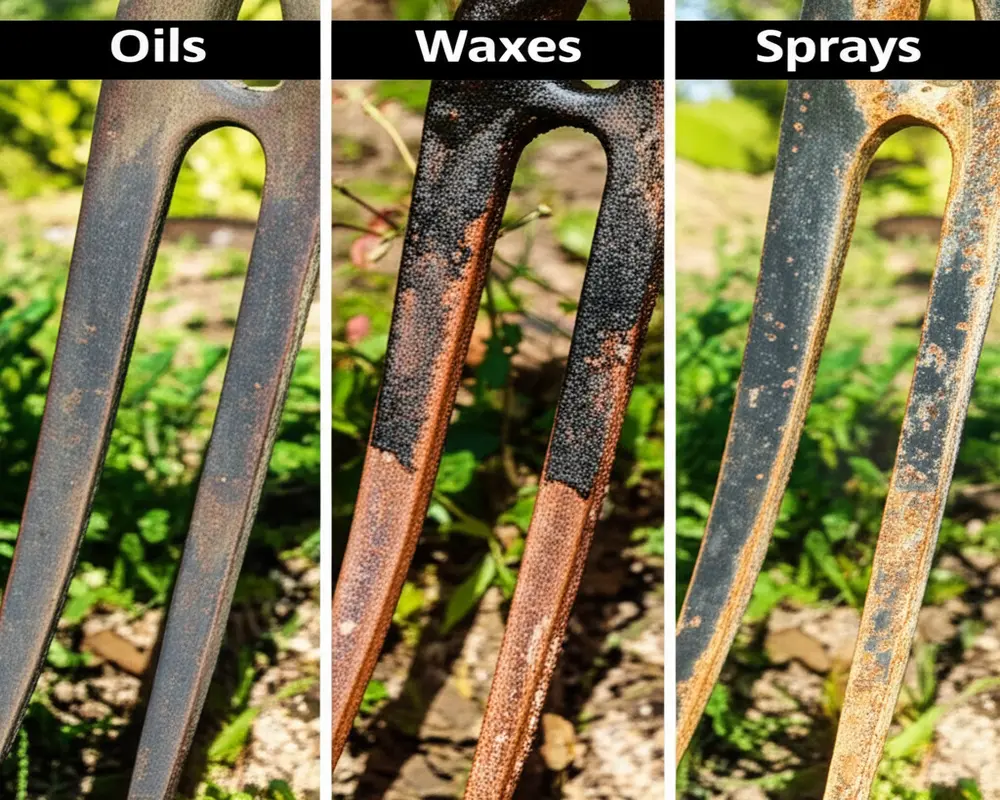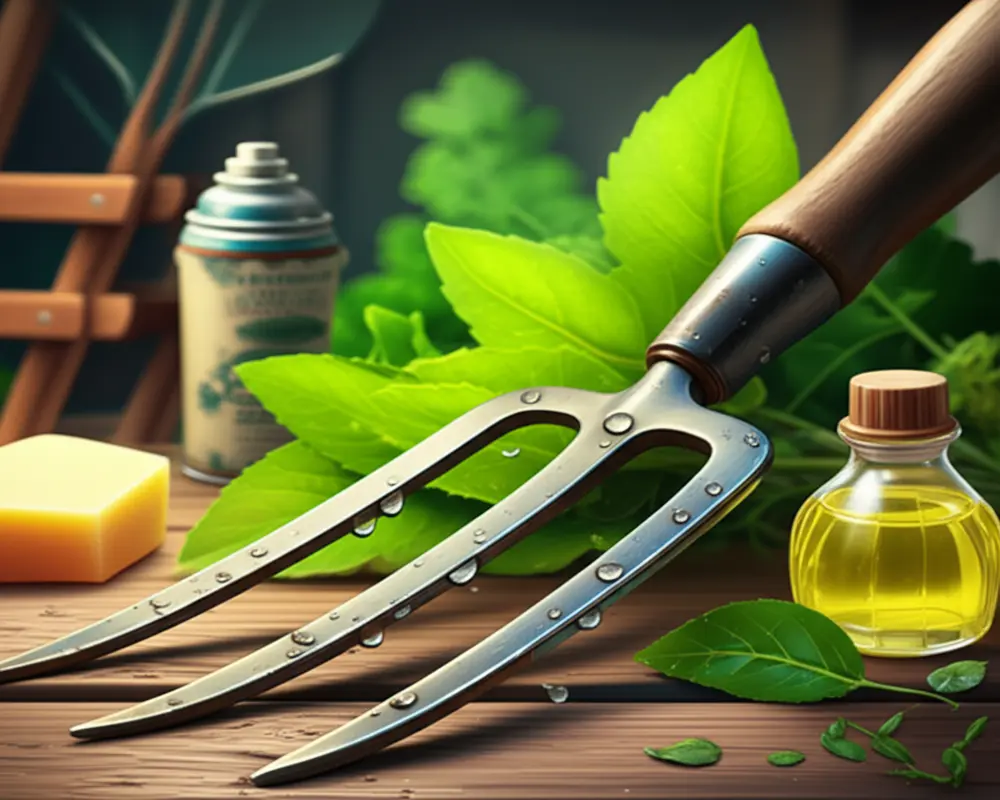Thank you for reading this post, don't forget to subscribe!
Garden Fork Rust Prevention: The Definitive 2025 Guide
Rust is a persistent adversary to the integrity of your garden fork, threatening its performance and longevity. Over time, rust can significantly impair your essential garden tool, making simple gardening tasks harder and leading to costly replacements. For gardeners intent on preserving their investments, employing a thorough approach to garden fork rust prevention in 2025 is crucial.
In this guide, you will master essential cleaning techniques, select the most effective protective coatings, implement proper storage solutions, and adopt a maintenance routine tailored to extend the lifespan of your garden forks. Backed by professional gardening experience and best tool care practices, this comprehensive tutorial will empower you to keep your garden fork rust-free and efficient year-round.
1. Understanding Why Garden Forks Rust and Its Importance
At the core, rust is the product of oxidation — a chemical reaction between iron, oxygen, and moisture. Garden forks, typically made from steel or iron alloys, are especially vulnerable because they routinely encounter wet soil, acidic conditions, and abrasive organic matter. Each use exposes the metal surface to this harsh environment, speeding up the rusting process.
Rust not only compromises the visual appeal of the garden fork but also diminishes its functional strength. The metal becomes brittle, susceptible to breaks or bends, reducing tool efficiency and forcing more frequent replacements. For gardeners, this translates into interruption and added expense.
Understanding these factors is the foundation for targeted rust prevention strategies that preserve your tool’s physical integrity.
2. Essential First Step: Cleaning Your Garden Fork After Use
Preventing rust begins immediately after gardening—never store your garden fork dirty or damp. Thorough cleaning removes corrosive elements that accelerate rust formation.
The cleaning process involves several key steps:
- Start by removing soil clumps, roots, and debris with a wooden or plastic scraper to avoid scratching.
- Wash the fork with water using a stiff or wire brush, employing mild soap if needed for grease or stubborn dirt.
- For sticky sap or residues, apply vinegar, citrus juice, or mild solvents to loosen the material.
- Rinse thoroughly to eliminate cleaning agents and dirt particles.
- Dry the tool completely by towel drying then air-drying in sunlight; short, controlled heat application can also help ensure no moisture remains.
Using appropriate cleaning brushes and soft cloths is recommended to avoid damaging metal or wooden components.

3. Choosing the Best Rust Prevention Methods: Oils, Waxes, and Sprays
After cleaning and drying, the next critical step is applying protective coatings that form barriers against moisture and oxygen. Choosing the right rust preventer depends on material compatibility, ease of application, cost, and environmental considerations.
Here’s an expert comparison of popular options:
| Method | Examples | Pros | Cons | Best Use |
|---|---|---|---|---|
| Natural Oils | Boiled linseed oil, camellia oil, mineral oil | Non-toxic, penetrates wood, conditions handle | Requires reapplication, moderate protection | Wooden handles and light metal protection |
| Protective Waxes | Paste wax, beeswax, carnauba wax | Durable, water-resistant, adds shine | Requires buffing, may attract dirt | Metal parts, handle sealing |
| Rust-Inhibiting Sprays | WD-40 Specialist, PTFE sprays | Easy to apply, quick drying | Less durable, frequent reapplication | Quick touch-up, hard-to-reach areas |
| Budget/DIY | Used engine oil, grease | Low cost, accessible | Messy, environmental concerns | Emergency or low-budget solutions |

4. How to Apply Rust Prevention Products Correctly
Application precision ensures your protective layer performs as expected. Begin with a thoroughly cleaned and fully dried garden fork. Apply oils thinly to metal parts and wooden handles—rub in well to penetrate pores without excessive buildup.
When using waxes, warm slightly to soften, then spread a thin, even coat. After drying, buff with a clean cloth to a smooth sheen for effective sealing.
Rust-preventive sprays require good ventilation; spray evenly from 6 to 8 inches away, covering all metal areas. Wipe off excess to prevent sticky residue and allow the coating to cure for at least 24 hours before storage.
Proper curing allows coatings to bond firmly, maximizing their protective properties.
5. Best Storage Practices to Prevent Rust on Garden Forks
Even the best treatments falter if storage conditions encourage moisture retention. Always keep garden forks dry, elevated off the ground, and shielded from the elements.
Ideal storage locations include sheds, garages, or workshops where humidity is controlled. Use wall-mounted racks or pegboards that encourage air circulation around the tool. Tool organizers and caddies also reduce contact with damp surfaces.
A traditional but effective method is storing forks in a sealed bucket filled with sand soaked in linseed oil. This keeps metal coated and away from moisture.
Dehumidifiers, desiccants, or simple ventilation improvements can maintain ideal storage conditions. Avoid common pitfalls such as leaving tools on wet floors, in direct sunlight for extended periods, or in damp basements.

6. Routine Maintenance Schedule for Long-lasting Garden Forks
Regular upkeep is paramount for rust-free and fully functional garden forks. Establishing a maintenance schedule tailored to your climate and frequency of use makes this manageable.
After each gardening session, clean and dry your garden fork diligently. Monthly or bi-monthly, perform deeper cleaning followed by reapplication of protective coatings and inspection of wooden handles for cracks or dryness.
Seasonal deep maintenance involves applying a heavy coat of protective oil or wax, conditioning wooden handles with linseed oil, and sharpening dull tines for effective soil penetration.
Annually, conduct a thorough tool inspection; address any significant damage or severe rust spots promptly to avoid premature replacement.
This routine balances tool care with practical gardener schedules, ensuring your garden fork remains dependable year after year.
7. Troubleshooting Rust: How to React If Rust Appears
Despite precautions, rust might still surface. It’s vital to distinguish minor surface rust from deep corrosion that threatens structural integrity.
For light rust, scrape or brush off deposits using a wire brush or fine sandpaper. Acidic natural solutions like vinegar or lemon juice can dissolve rust deposits; apply with care, wearing protective gloves, and rinse thoroughly afterwards.
Rust converters offer chemical transformations of rust into stable compounds and can be applied selectively for stubborn patches. After rust removal, immediately apply a protective coating to prevent reformation.
If rust has deeply pitted metal, weakening tines or handle connectors, replacement is advised as repairs may not restore full safety or function.
8. FAQ: Common Questions About Garden Fork Rust Prevention
- Can cooking oils be used for rust prevention?
- No, cooking oils tend to go rancid and attract dirt. Use mineral oil or boiled linseed oil for safe and effective protection.
- How often should protective coatings be reapplied?
- Reapplication depends on use and climate but generally every 1-3 months or sooner if you notice wear or dullness in the coating.
- What is the difference between WD-40 original and rust prevention spray?
- WD-40 original is a water-displacing spray mainly for lubrication and moisture removal; the rust prevention spray includes additives designed to form a longer-lasting rust barrier.
- How to handle wooden handle splinters and cracks?
- Sand down splinters carefully and apply a wood conditioner or linseed oil. Replace the handle if cracks are deep or compromise grip safety.
- Is painting garden forks beneficial?
- Painting can provide a protective seal over metal but may chip with use, exposing bare metal. Combining paint with oil or wax coatings improves protection.
- How do you sharpen garden fork tines?
- Using a file or bench grinder, sharpen the tines edges at a slight angle to restore penetration capabilities while maintaining the overall shape.
For more gardening tool care techniques such as how to sharpen pruning shears, explore our comprehensive guides designed to keep your gardening gear in top shape.
Conclusion: Your Role in Extending Your Garden Fork’s Life
Successful garden fork rust prevention relies on a consistent commitment to cleaning, protecting, storing, and maintenance. These pillars not only shield your tool from rust but ensure reliable performance when you need it most. Begin adopting these expert strategies today, and enjoy the benefits of durable, efficient garden forks well into the future.
“The longevity of your garden tools is often determined by the care invested between uses.”
Explore additional expert gardening insights and tool recommendations at the best garden spades 2025 page. For science-backed rust prevention knowledge, visit Rust Science and Prevention. For quick-to-use rust-preventive products, check out WD-40’s specialist rust preventive range.

